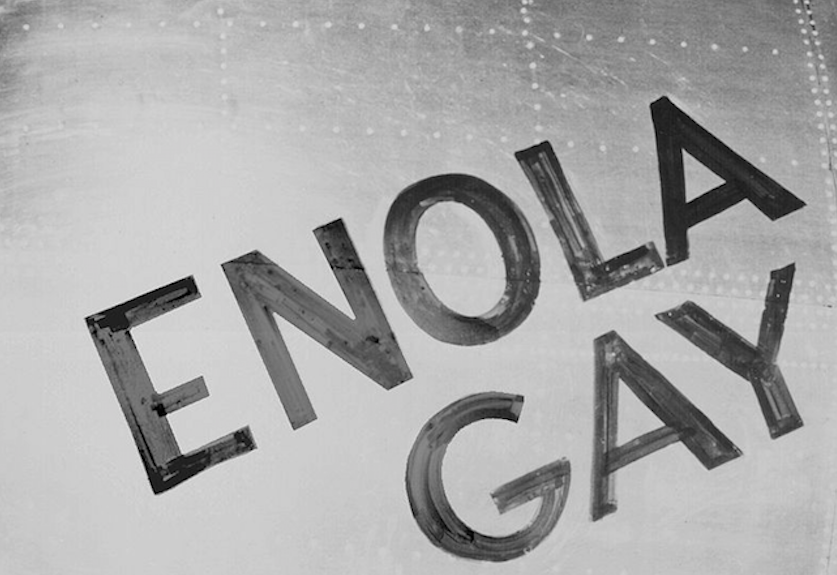The Enola Gay was named after the mother of Colonel Paul Tibbets — the man who selected the Boeing B-29 Superfortress bomber aircraft off the assembly line to be the stork for the greatest weapon humankind ever created: the nuclear bomb.
On August 6, 1945, a whopping 70 years ago, the atomic explosive was dropped. On Hiroshima.**
Loaded up a day earlier, it was piloted by Tibbets and took off from an airfield on one of the Mariana Islands, in the middle of the Pacific Ocean. Captain William S. “Deak” Parsons — the commander of the mission — armed the bomb during the flight (to lessen the risk that it would detonate during takeoff) with the help of Second Lieutenant Morris R. Jepson. When they reached 32,333 feet, the target was clear and in sight. They released the warhead, named “Little Boy”, from the grasp of the bomber at 8:15 in the morning Hiroshima time and it took 43 seconds for it to go off at the predetermined altitude of 1,968 feet above the city (contrary to popular belief that it exploded when it hit the ground).
The Enola Gay traveled almost 12 miles before it felt the shock waves of the explosion. On board, navigating the enormous flying ship was a man named Theodore Van Kirk. He was, after all, a navigator and captain in the United States Army Air Forces, and joined Tibbets, Parsons, Jeppson, Technical Sergeant George R. “Bob” Caron, Technical Sergeant Wyatt E. Duzenbury, Sergeant Joe S. Stiborik, Sergeant Robert H. Shumard, Private First Class Richard H. Nelson, Captain Robert A. Lewis, Major Thomas Ferebee and First Lieutenant Jacob Beser on the flight on the now infamous B-29.
Van Kirk was also the last living member of this crew. Here’s footage of him from 2010 explaining what it was like on that fateful morning. He passed away on July 28, 2014 at the age of 93.
Tibbets died on November 1, 2007, at the age of 92.
** – According to numerous reports, an estimated 70,000 to 80,000 people were killed and another 70,000 were injured by the bombing and the subsequent firestorm.




































